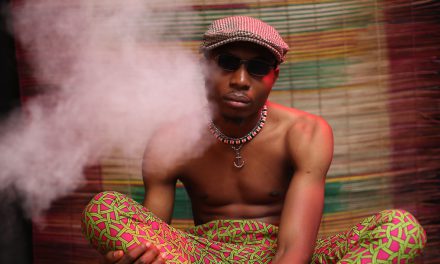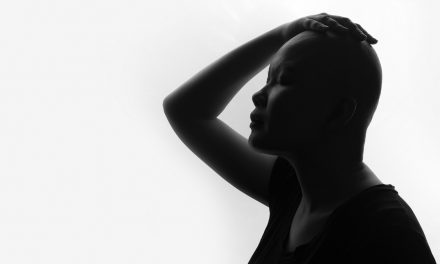Statements like “your ZIP code is the best predictor of your health” have all but become a proverb in the public health community. It is well known that social determinants of health (SDOH) have a potent impact on health outcomes, both physical and mental, and Native Americans consistently face high SDOH barriers. According to one article, Native Americans’ federal health agency, the Indian Health Service (IHS), receives just half of the funding it would need to offer care on par with federal programs that provide healthcare to prisoners, and the life expectancy for Native Americans is 4.4 years shorter than the U.S. average.
In light of statistics like these, the deep scars of cultural trauma, and now the global coronavirus pandemic, Native Americans face a host of challenges to their mental health. Recently, Mental Health America hosted a webinar featuring several Native speakers, Dr. Martina Whelshula, Dr. Kimberly Yellow Robe, Shelby Rowe, and others to share their personal stories of mental health.
Dr. Whelshula, whose given name means “dress touches the ground,” is a citizen of the Arrow Lakes Nation of the Colville Confederated Tribes, mother of six and grandmother of twenty. Her Ph.D. in traditional knowledge allowed her to travel the world and study with other indigenous communities. Now, she works in intergenerational colonial trauma and healing with families and tribes. “Passionate work that I love,” Dr. Whelshula said.
For three generations preceding her, Dr. Whelshula’s maternal family went to boarding school — which are, historically, institutions designed to assimilate Native Americans with varying degrees of cruelty. “I was parented out of the boarding school discipline, so I have complex PTSD as a result of that,” Dr. Whelshula said. “A lot of violence in the home […] a lot of bullying. A lot of trauma, a lot of violence that was happening.”
As a child, Dr. Whelshula coped by being outdoors. “As much as I could go outdoors, build forts, go swimming, chase snakes and turtles, just being outside was the most healing experience for me.” Outdoor activities tided her over until she went to live with her elders. Learning their wisdom, from and with her community, was a powerful source of healing. “I think for our youth, that has to be the most powerful healing modality: to be immersed, having people care enough to pass on those teachings,” Dr. Whelshula said. “They give it with such love because they love their culture, their worldview, their language, and they want to give and share. That act in and of itself was just so, like, ‘I have value. I am worthy enough for them to want to give that to me.’
All of the things that our culture teaches us actually help in healing that epigenetic trauma. I can, through all of that, begin to heal those future generations.”
Dr. Kimberly Yellow Robe, whose Lakota name means “in the palm of her hand,” is a mother of four, a graduate of Virginia University-Lynchburg, and now the Associate Director of Banner University Health Plans. “COVID times were very difficult,” Dr. Yellow Robe said. The pandemic brought a multitude of complications that impeded traditional ceremony practices, such as the Sundance ceremony. “At the Sundance ceremony, we have different blessings and honorings. Weddings, making a relative, name-giving. When the COVID hit, it’s not just my community, but other communities too, that had to shut down. Isolate, quarantine.”
Being unable to participate in ceremonies which have gone on for hundreds of years was a significant disruption. Her husband, whose Hopi culture similarly emphasized long-running community ceremonies, also had a tough time that manifested as PTSD and withdrawn depression.
“The fear that the COVID created was something that we never experienced before, and our Lakota virtue is to be brave and not to have cowardice. We had to step up and find alternative ways for him to cope with not being able to go back to ceremony,” Dr. Yellow Robe said. “Reflecting back on prayer, reflecting back on song. I went out into the park, and I put my regalia on and I danced, and posted the video and connected with my community.”
Without ceremony to bring the community together, to share news and blessings, some of the pandemic’s casualties couldn’t be properly honored for some time. “Last year, they had ceremony. We didn’t know some of our relatives, our grandparents and grandmas and aunties and uncles, had passed from COVID. They had a flier that had 100 or so names on it that they were going to honor at that Sundance ceremony,” Dr. Yellow Robe said. “Times are hard. Have self-care. Find ways to navigate through the loneliness and isolation that the COVID brought.”
Shelby Rowe, a Chickasaw Native, is the Director of the Suicide Prevention Resource Center and a suicide attempt survivor with PTSD. She is a mother of three and has worked in public health for more than 20 years. “What has been healing for me has been reconnecting and learning more about my family, about my tribe and our history,” Rowe said. In tribal communities, honoring ancestors and preparing for future generations are both duties which converge on the present. “Part of my healing has been, ‘What can I do to honor my ancestors?’ and learning about them specifically. Where did they live, what were their lives like, what did they eat, what were their struggles, and how can I help them move that forward? But also, what can I do to make a stronger path for those to come after me?”
Different concepts of death, afterlife, and future generations can make the healing process carry even more significance for people from some Native American cultures. “For the Chickasaw Nation, traditionally, we didn’t believe in death the way we look at it in current society. We looked at it as a different season. When we heal ourselves, we are healing them. They’re not gone, they’re still with us. They’re just living in their next season. It’s never too late. When we step back and heal, we heal not just for ourselves, but for others.”
By receiving the culturally-sensitive care necessary to heal from within their own communities, these Native speakers highlighted the importance of cultural competence in care settings to adequately address patient needs. Learn more about cultural competence in health care: https://www.aha.org/ahahret-guides/2013-06-18-becoming-culturally-competent-health-care-organization








